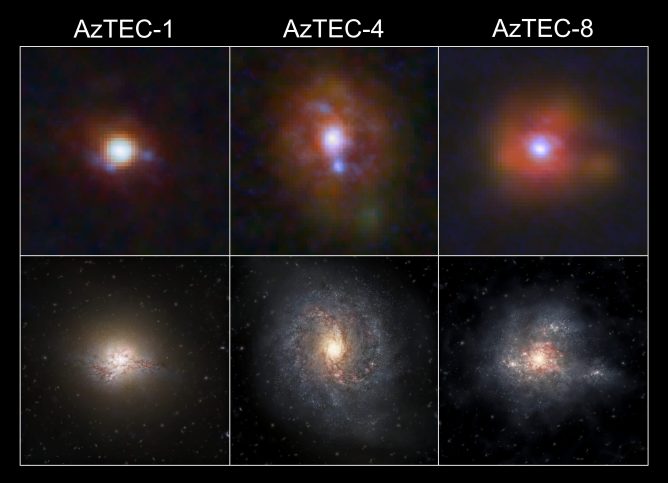A new record for the most distant galaxy cluster has been set using NASA’s Chandra X-ray Observatory and other telescopes, including the Atacama Large Millimeter/submillimeter Array (ALMA). This galaxy cluster may have been caught right after birth, a brief, but important stage of evolution never seen before.
The galaxy cluster is called CL J1001+0220 (CL J1001 for short) and is located about 11.2 billion light years from Earth (Note). The discovery of this object pushes back the formation time of galaxy clusters – the largest structures in the Universe held together by gravity – by about 700 million years.
Note: Here we calculated the distance to the galaxy cluster using the latest cosmological parameters measured with Planck (H0=67.3km/s/Mpc, Ωm=0.315, Λ=0.685: Planck 2013 Results). Some press releases use different parameters and yield different distance. Please refer to “Expressing the distance to remote objects” for the details.
These observation results were published as Wang et al. “Discovery of a galaxy cluster with a violently starbursting core at z=2.506” in the Astrophysical Journal issued in August 2016.
This image contains the most distant galaxy cluster. This composite shows CL J1001+0220 (CL J1001, for short) in X-rays from Chandra (purple), infrared data from ESO’s UltraVISTA telescope (red, green, and blue), and radio waves from the Atacama Large Millimeter/submillimeter Array (ALMA) (green). The diffuse X-ray emission comes from a large amount of hot gas, one of the defining elements of a galaxy cluster.
Credits: X-ray: NASA/CXC/CEA/T. Wang et al; Infrared: ESO/UltraVISTA; Radio: ALMA (ESO/NAOJ/NRAO)










